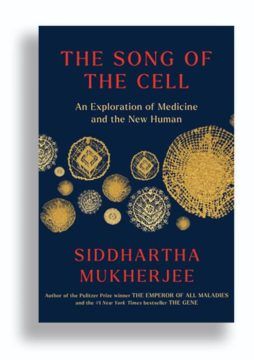Jennifer Szalai in The New York Times:
 In his new book, “The Song of the Cell,” Siddhartha Mukherjee has taken on a subject that is enormous and minuscule at once. Even though cells are typically so tiny that you need a microscope to see them, they also happen to be implicated in almost anything to do with medicine — and therefore almost anything to do with life. Guided by Mukherjee’s granular narration (“As you keep swimming through the cell’s protoplasm …”), I was repeatedly dazzled by his pointillist scenes, the enthusiasm of his explanations, the immediacy of his metaphors. But I also found myself wondering where we were going. What kind of organism might these smaller units add up to? What was the shape of the story he set out to tell?
In his new book, “The Song of the Cell,” Siddhartha Mukherjee has taken on a subject that is enormous and minuscule at once. Even though cells are typically so tiny that you need a microscope to see them, they also happen to be implicated in almost anything to do with medicine — and therefore almost anything to do with life. Guided by Mukherjee’s granular narration (“As you keep swimming through the cell’s protoplasm …”), I was repeatedly dazzled by his pointillist scenes, the enthusiasm of his explanations, the immediacy of his metaphors. But I also found myself wondering where we were going. What kind of organism might these smaller units add up to? What was the shape of the story he set out to tell?
They’re questions that Mukherjee himself anticipates in the early pages of “The Song of the Cell,” drawing a contrast between the structure of his new book and the arcs of his previous ones. “The Gene” (2016), he says, “was propelled by the quest to decode and decipher the code of life”; his first book, the superb “The Emperor of All Maladies” (2010), which won a Pulitzer Prize, was animated by “the aching quest to find cures for cancer or to prevent it.” This latest effort — with sections on cell biology, on neurons, on immunotherapy, among other topics — “is itself a sum of parts,” Mukherjee writes. “The organization is cellular, if you will.”
More here.
